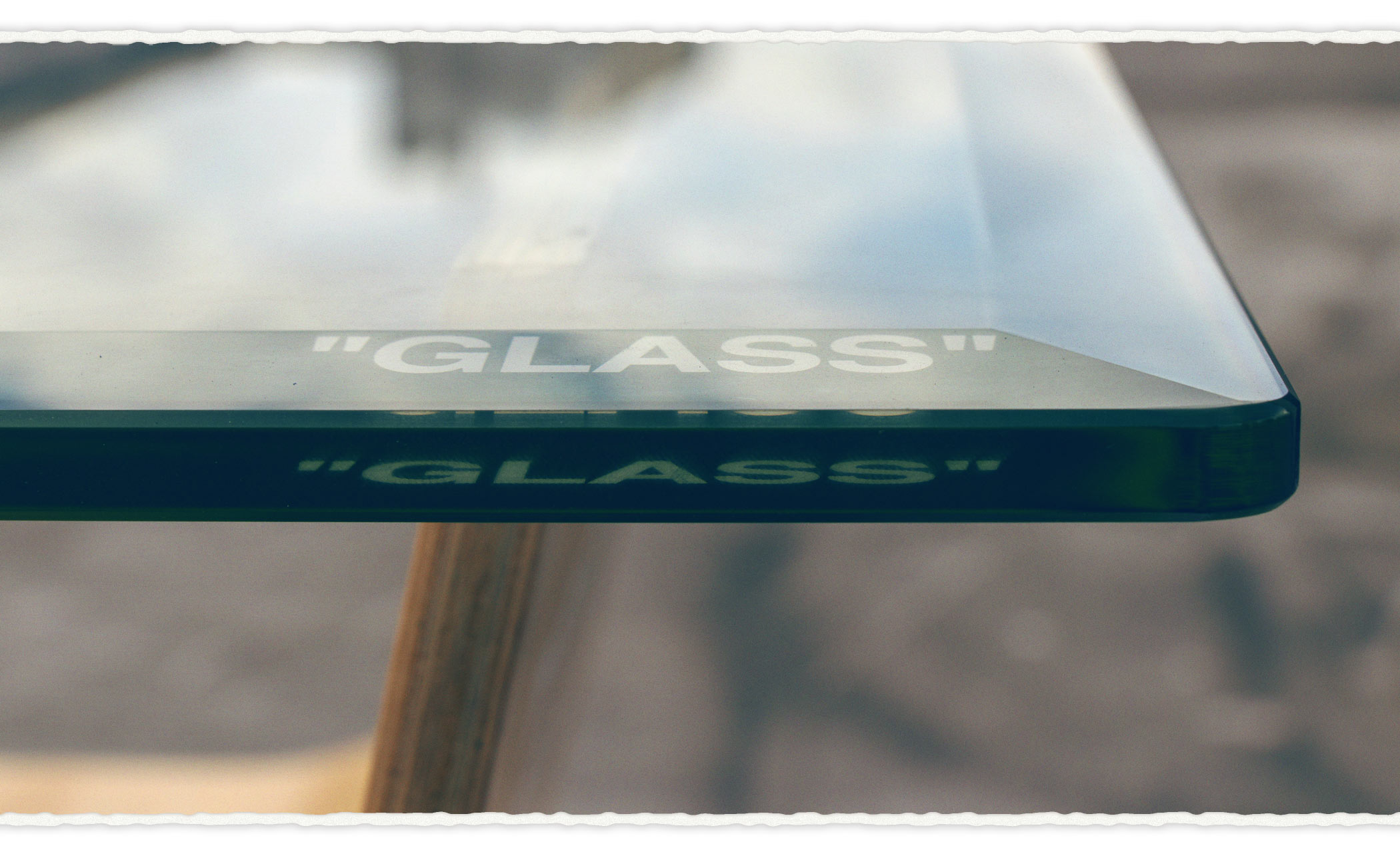Heart Of The City
– 2018 –
Industrial Design & Mechanical Engineering
This project explores a deconstructed furniture collection inspired by NYC & Virgil Abloh.
– 2018 –
This project explores a deconstructed furniture collection inspired by NYC & Virgil Abloh.
In the summer of 2018 I packed up my things in Silicon Valley and moved to New York City. I was looking for a higher-energy environment and NYC’s culture of fashion, design, and entertainment really resonated with me. The hustle and grit of the city is truly unlike anything else. While driving across the country I kept thinking about the exciting opportunities NYC had and decided that I would design a small furniture collection to mark my new beginning. I was heavily inspired by the fashion of New York and the influence that OFF-WHITE was having on popular culture. So I channeled these feelings and designed a coffee table and lounge chair using Virgil Abloh as a muse.
My main inspiration was Virgil Abloh’s Nike collaboration "The Ten". His use of subtle deconstruction and purposefully ironic typography went beyond just changing the colorway—it offered a fresh perspective on some of Nike’s most iconic shoes. His collection was visually interesting while still embracing each shoe’s original iconography. It was pure yet raw. Rough but polished.
I wanted to take a similar approach to my furniture collection. I had been developing my own unique style of plywood furniture since 2015 and asked myself the question: what would my furniture look like if Virgil reimagined it? The mood of this collection is a reflection of that question. It features my warm yet modern furniture style mixed with the iconic design elements of Virgil Abloh. It is what I imagine a Timothy James Designs x OFF-WHITE collaboration would be.


The industrial design involved two steps: first developing my own original furniture designs and then tweaking those designs to reflect Virgil’s iconic style. Developing my own original furniture was relatively straightforward. My approach was to distill the function of the furniture down to its essence and then explore ways of representing this essence through simplified, purposeful surfaces. Guiding these surfaces were certain underlying proportions, angles, and bend radii that I had developed during my previous furniture projects. Because I had already dialed in the general design framework through those projects, not much design exploration was necessary for this collection. On top of that, while the coffee table was a completely original design, the lounge chair was a refined version of the Ray Lounge Chair that I had designed in 2015.
With the original furniture designs completed, I looked at ways of implementing Virgil’s deconstructed and typographic design elements. Because plywood is made from layered plys glued together, I was able to explore ways of pulling these layers apart to expose their underlying manufacturing process. I then paired it with bright red duct tape to enhance the deconstructed feel while adding contrasting pops of color. I also incorporated strategic typographic quotes to further highlight the essence of each furniture piece. Altogether, the design elements help to reveal the underlying design philosophy driving each piece of furniture.
The unusual engineering challenge I faced when designing this collection involved the deconstructed elements. Because pulling apart and exposing plys compromises plywood’s structural integrity, I had to do it very strategically. Based on my past experiences I knew that 4 plys was the absolute minimum thickness that I could go on wide surfaces like the coffee table body, and 6 plys were the minimum for narrow surfaces like the legs. This meant that each additional layer I glued to these surfaces could be used for deconstruction without compromising the underlying structural integrity. Just to confirm that I wasn’t overlooking any unexpected stress concentrations, I performed a few basic FEA loading tests until I was confident that the designs were sufficiently robust.
When it came to fabrication not much was different from the Monaco Sofa build that I did a few months earlier. However I did try to streamline the fabrication process to gauge if it could be optimized for mass production. The deconstructed elements were the only new aspects of the fabrication process that I had to figure out. They required molding the pieces twice—first the underlying structural plys and then the outer deconstructed plys. Next came the red tape accents. These had to be cut into specific geometric shapes in order to achieve clean, perpendicular lines when folded around the plywood. Finally came the typography. I ordered custom rub-on transfers of all the text elements and carefully applied them to the bare wood. I then covered everything in a clear coat to protect the wood and typography from scratches and moisture. In total I spent around 3 weeks constructing the collection.


















